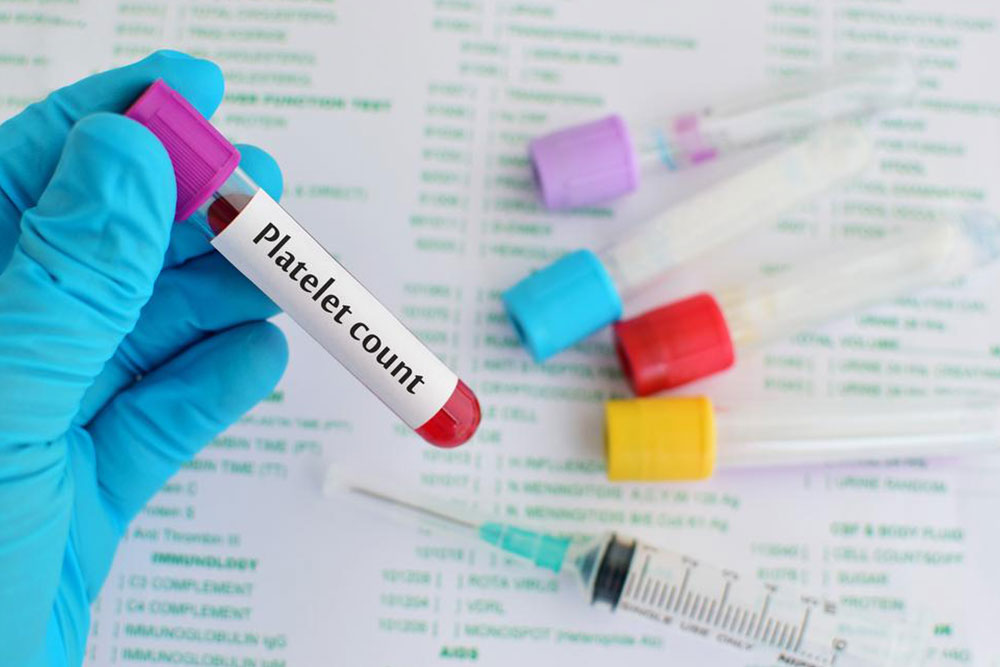Comprehensive Guide to Thrombocytopenia: Causes, Symptoms, and Management of Low Platelet Counts
This comprehensive guide covers everything about thrombocytopenia, including its symptoms, causes, diagnosis, and treatment options. Understanding low platelet levels is crucial for early detection and effective management of this potentially serious condition. Learn how various medical conditions, medications, and lifestyle factors contribute to thrombocytopenia and discover ways to manage and prevent complications with expert advice.

Comprehensive Guide to Thrombocytopenia: Causes, Symptoms, and Management of Low Platelet Counts
Platelets, also known as thrombocytes, are essential blood components that play a critical role in hemostasis—the process that stops bleeding after injury. These tiny cell fragments are produced in the bone marrow and circulate in the bloodstream, maintaining the balance between bleeding and clotting. Normal platelet levels typically range from 150,000 to 350,000 per microliter of blood. Maintaining these levels is vital for overall health and proper vascular function.
When platelet counts fall below the normal range, the condition is termed thrombocytopenia. Thrombocytopenia can pose serious health risks, including increased bleeding tendency, spontaneous bruising, and in extreme cases, life-threatening hemorrhages. Recognizing the early signs and understanding the causes of low platelet levels are crucial for prompt diagnosis and effective treatment.
In this comprehensive guide, we will delve into the symptoms of thrombocytopenia, explore a wide array of potential causes—ranging from medication effects to underlying medical conditions—and discuss available management strategies to address this condition.
Symptoms of Thrombocytopenia
Identifying thrombocytopenia early can significantly improve outcomes. The symptoms often manifest in various ways, depending on the severity of the platelet deficiency. Common signs include:
Unexplained bruises or purpura (purple spots on the skin)
Prolonged bleeding from cuts or injuries
Frequent or severe nosebleeds
Bleeding gums, especially after dental procedures
Blood in urine or stool, indicating internal bleeding
Persistent fatigue and weakness
Enlargement of the spleen or liver
Heavy menstrual bleeding (menorrhagia)
Spontaneous bleeding or petechiae (tiny red or purple spots on the skin)
If you experience these symptoms, it is essential to seek medical attention promptly for accurate diagnosis and appropriate treatment.
Understanding the Causes of Thrombocytopenia
The causes behind low platelet counts are diverse, encompassing medical conditions, medication effects, toxins, and lifestyle factors. Here, we will explore the most common and significant reasons for thrombocytopenia.
1. Medication and Substance-Induced Thrombocytopenia
Many medications and environmental toxins can interfere with platelet production or accelerate their destruction, leading to thrombocytopenia. Examples include:
Medications: Certain drugs have known thrombocytopenic side effects. These include:
Heparin and other anticoagulants used to prevent blood clots
Antibiotics such as sulfonamides
Over-the-counter pain medications like ibuprofen, naproxen, and acetaminophen
Seizure medications and certain chemotherapies
Drinks containing quinine, like tonic water, can sometimes cause reactions leading to platelet destruction
Substances like pesticides, arsenic, and benzene are environmental toxins that can impair bone marrow function or directly harm circulating platelets. Excessive alcohol consumption can also suppress bone marrow activity, reducing platelet production.
2. Medical Conditions Leading to Thrombocytopenia
Various underlying health conditions can cause low platelet counts. These include:
Bone marrow disorders: Diseases like leukemia, lymphoma, and multiple myeloma can disrupt the normal production of blood cells, including platelets.
Blood disorders: Conditions like aplastic anemia, hemolytic anemia, or myelodysplastic syndromes impair marrow function.
Viral infections: Severe infections such as hepatitis C, HIV, dengue fever, and mononucleosis can lead to decreased platelet production or increased destruction.
Spleen-related issues: An enlarged spleen (splenomegaly) can sequester large numbers of platelets, removing them from circulation. This often occurs in liver disease or certain blood disorders.
Pregnancy: Gestational thrombocytopenia is a common, usually mild, condition that occurs during pregnancy due to increased blood volume and immune changes.
3. Autoimmune and Inflammatory Conditions
Autoimmune diseases, such as immune thrombocytopenic purpura (ITP), lupus, and rheumatoid arthritis, can lead to the immune system mistakenly attacking and destroying platelets.
4. Other Causes
Other factors include nutritional deficiencies—such as vitamin B12 and folate deficiencies—that impair blood cell production, and certain genetic disorders that affect platelet formation.
Understanding these causes helps in tailoring appropriate diagnostic tests and treatment plans, which can significantly improve patient outcomes.
Diagnosis and Management of Thrombocytopenia
When low platelet levels are suspected, a comprehensive medical evaluation is essential. Blood tests, including a complete blood count (CBC), are typically the first step. Additional tests such as bone marrow biopsy, blood smear examination, and specific antibody tests may be necessary to identify underlying causes.
Treatment depends on the severity and etiology of thrombocytopenia. Mild cases may require no intervention, just regular monitoring. More severe conditions might necessitate medications like corticosteroids, immunoglobulins, or drugs that stimulate platelet production. In some cases, treating the underlying cause—such as discontinuing offending medications or managing infections—can restore normal platelet levels.
For patients with chronic or severe thrombocytopenia, procedures such as splenectomy or platelet transfusions may be considered. Lifestyle adjustments, like avoiding activities that increase bleeding risk and managing any coexisting health conditions, are also crucial.
Early diagnosis and tailored treatment strategies are fundamental in managing thrombocytopenia effectively, thereby reducing the risk of bleeding complications and improving quality of life.
Thrombocytopenia is a complex condition with various causes, ranging from medication effects to serious underlying diseases. Recognizing the symptoms early, understanding the potential causes, and seeking timely medical care are essential steps in managing this condition. If you experience unexplained bruising, bleeding, or fatigue, consult a healthcare professional for proper evaluation and treatment planning.





